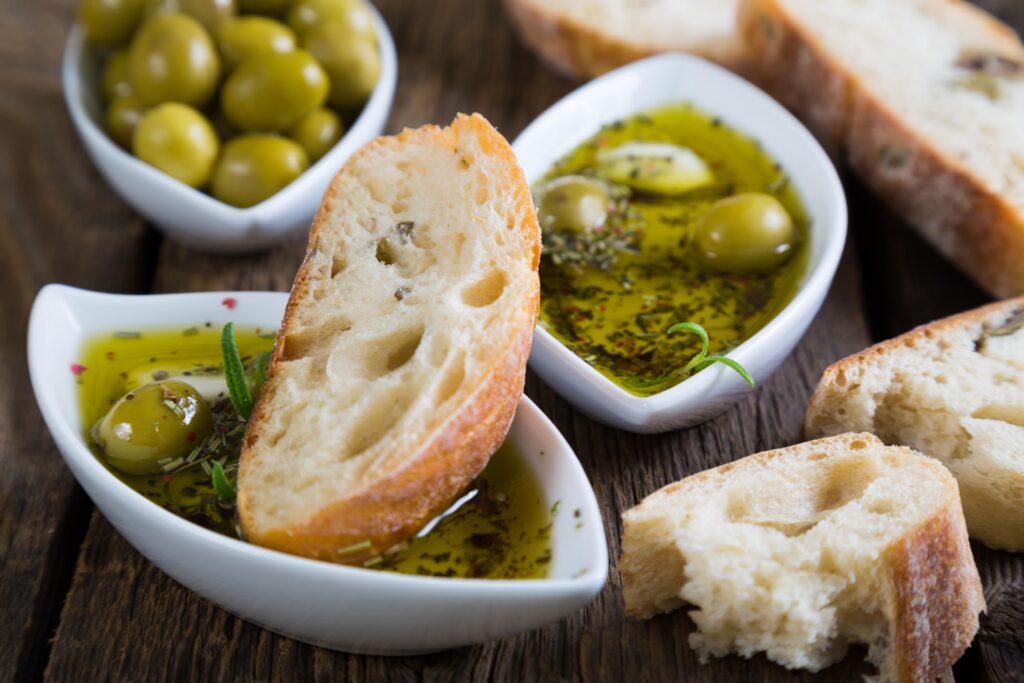
Cooking with Olive Oil: Tips and Tricks for the Perfect Dish
Olive oil has long been praised for its numerous health benefits, versatile flavour profile, and excellent culinary performance. Vallesur’s premium olive oils are perfect for elevating your dishes and enhancing your cooking experience. In this comprehensive guide, we’ll share essential tips and tricks for cooking with olive oil to help you create the perfect dish every time.
Choose the Right Olive Oil for Your Dish
The type of olive oil you use can have a significant impact on the flavour and quality of your dish. Here are some guidelines to help you choose the right oil for your culinary needs:
– Extra Virgin Olive Oil: Best for dishes where the taste of the oil plays a prominent role, such as salad dressings, dips, and drizzles over finished dishes. Due to its lower smoke point, it’s not ideal for high-heat cooking. Extra virgin olive oil is the highest quality, offering a more complex flavour profile and greater health benefits.
– Refined Olive Oil: Suited for high-heat cooking methods like frying, sautéing, and baking, thanks to its higher smoke point and neutral flavour. It’s a versatile option for everyday cooking but lacks the robust flavours and health benefits of extra virgin olive oil.
– Light or Pure Olive Oil: These varieties are usually a blend of refined and virgin olive oils, offering a higher smoke point and milder taste than extra virgin olive oil. They are suitable for general-purpose cooking.
Store Your Olive Oil Properly
Proper storage is essential for maintaining the quality and flavour of your olive oil. Follow these guidelines to keep your olive oil fresh:
– Keep your olive oil in a cool, dark place away from direct sunlight and heat. A kitchen cabinet or pantry is ideal. Avoid storing it near the stove or oven, as heat can cause the oil to degrade.
– Use a tightly sealed, dark-coloured container to protect the oil from oxidation and degradation. Exposure to air can also affect the oil’s quality, so be sure to close the bottle tightly after each use.
– Track the oil’s freshness by noting the harvest or expiration date on the bottle. Olive oil has a limited shelf life, usually between 12 and 18 months, so it’s best to use it within this timeframe.
Heat Olive Oil Correctly
Heating olive oil correctly is crucial for achieving the best flavour and maintaining the oil’s health benefits. Here are some tips for heating olive oil:
– Low to Medium Heat: For extra virgin olive oil, use low to medium heat to preserve its delicate flavours and prevent the oil from breaking down. Using gentle heat also helps maintain the oil’s nutritional benefits, as high temperatures can cause some nutrients to degrade.
– High Heat: Refined olive oil can handle higher temperatures, making it suitable for frying, sautéing, and baking. Be cautious not to exceed the oil’s smoke point, as this can result in the production of harmful compounds and a bitter taste.
– Avoid Reusing Oil: Repeatedly heating and cooling oil can cause it to break down, producing harmful compounds and losing its flavour. It’s best to use fresh oil each time you cook.
Incorporate Olive Oil into Your Dishes
There are countless ways to incorporate olive oil into your cooking. Here are some ideas to get you started:
– Salad Dressings: Mix extra virgin olive oil with vinegar or lemon juice, salt, and pepper for a simple yet flavorful dressing. You can also experiment with adding different herbs, spices, and other ingredients to create unique dressings.
– Marinades: Combine olive oil with your choice of herbs, spices, and seasonings to create a flavourful marinade for meat, poultry, fish, or vegetables. The oil helps to tenderise the proteins and infuse the flavours throughout the dish.
– Roasting and Grilling: Olive oil can be used to coat vegetables, meats, and fish before roasting or grilling. This creates a delicious, crispy exterior while keeping the inside moist and tender.
– Sautéing: Use refined olive oil for sautéing vegetables, meats, or seafood to impart a subtle flavour and ensure even cooking.
– Baking: Substitute refined olive oil for butter or other fats in baking recipes for a healthier alternative with a moist, tender texture.
– Drizzling and Finishing: Drizzle extra virgin olive oil over finished dishes, such as pasta, risotto, or pizza, to enhance the flavour and add a touch of richness.
Pair Olive Oil with Complementary Flavours
Experiment with pairing olive oil with different ingredients to create harmonious and balanced flavours in your dishes. Some classic pairings include:
– Tomatoes: The acidity of tomatoes pairs beautifully with the fruity, peppery notes of extra virgin olive oil, making it a staple in Mediterranean cuisine.
– Citrus: The bright, tangy flavours of citrus fruits, like lemon or orange, complement the fruity notes in olive oil, creating a refreshing and vibrant taste.
– Garlic and Onions: The pungent, aromatic flavours of garlic and onions work well with olive oil, adding depth and complexity to dishes.
– Fresh Herbs: Basil, rosemary, thyme, and other fresh herbs can enhance the flavour of olive oil, adding an extra layer of freshness to your dishes.
– Cheese: Creamy, tangy cheeses like feta or goat cheese pair nicely with the fruity, slightly bitter notes of olive oil.
In conclusion, cooking with olive oil can elevate your culinary creations, offering a healthier and more flavorful alternative to other fats. Vallesur’s premium olive oils are the perfect addition to your kitchen, providing exceptional taste and quality. Visit our website to explore our range of products and enhance your cooking experience with Vallesur olive oils.




